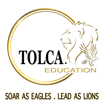Podcast
Questions and Answers
What is the primary purpose of effective delegation in leadership?
What is the primary purpose of effective delegation in leadership?
- To influence employee behavior directly
- To create a high-performance environment
- To accomplish tasks through others (correct)
- To eliminate the need for communication
Which component is crucial for successful delegation?
Which component is crucial for successful delegation?
- Restricting authority to avoid conflicts
- Micromanaging to ensure completion
- Clear communication of tasks and expectations (correct)
- Allowing employees to set their own deadlines
What is the role of motivation in the context of leadership?
What is the role of motivation in the context of leadership?
- To control employee actions through strict rules
- To align employee needs with brokerage goals (correct)
- To create tension among employees
- To eliminate individual workers' desires
What could be a pitfall of ineffective delegation?
What could be a pitfall of ineffective delegation?
Which of the following is NOT a basic motivational need for employees?
Which of the following is NOT a basic motivational need for employees?
What is a key component of two-way communication?
What is a key component of two-way communication?
Which technique is NOT associated with active listening?
Which technique is NOT associated with active listening?
When managing conflict, which strategy is most effective?
When managing conflict, which strategy is most effective?
What factor is LEAST likely to cause resistance to change among employees?
What factor is LEAST likely to cause resistance to change among employees?
Which method is used for assessing employee performance?
Which method is used for assessing employee performance?
Which strategy is NOT effective for overcoming resistance to change?
Which strategy is NOT effective for overcoming resistance to change?
What is the primary goal of effective coaching?
What is the primary goal of effective coaching?
Which aspect is essential when setting goals?
Which aspect is essential when setting goals?
Which of the following is NOT a characteristic of non-verbal communication?
Which of the following is NOT a characteristic of non-verbal communication?
What is the benefit of win-win solutions in conflict resolution?
What is the benefit of win-win solutions in conflict resolution?
Which component of effective leadership involves balancing authority and responsibility?
Which component of effective leadership involves balancing authority and responsibility?
Effective communication is not important in the delegation process.
Effective communication is not important in the delegation process.
What is one basic motivational need that aligns employee needs with brokerage goals?
What is one basic motivational need that aligns employee needs with brokerage goals?
________ is the process of guiding employee activities to create a high-performance environment.
________ is the process of guiding employee activities to create a high-performance environment.
What is a key element of active listening?
What is a key element of active listening?
Non-verbal communication only includes facial expressions.
Non-verbal communication only includes facial expressions.
What is one reason employees may resist change?
What is one reason employees may resist change?
Effective communication includes interactive exchange of __________.
Effective communication includes interactive exchange of __________.
Which approach fosters mutual respect in communication?
Which approach fosters mutual respect in communication?
Clarity is not important for effective communication.
Clarity is not important for effective communication.
What is a win-win solution in conflict resolution?
What is a win-win solution in conflict resolution?
Employees may exhibit a __________ mindset regarding change due to tradition.
Employees may exhibit a __________ mindset regarding change due to tradition.
Which of the following is a strategy for overcoming employee resistance to change?
Which of the following is a strategy for overcoming employee resistance to change?
Flashcards
Leadership
Leadership
Guiding employees and fostering high performance within the brokerage.
Delegation
Delegation
Assigning tasks to others while maintaining responsibility.
Effective Delegation
Effective Delegation
Clear task communication and ongoing feedback preventing misalignment.
Micromanagement
Micromanagement
Signup and view all the flashcards
Motivation
Motivation
Signup and view all the flashcards
Employee Needs
Employee Needs
Signup and view all the flashcards
Communication
Communication
Signup and view all the flashcards
Conflict Management
Conflict Management
Signup and view all the flashcards
Change Management
Change Management
Signup and view all the flashcards
Coaching
Coaching
Signup and view all the flashcards
Active Listening
Active Listening
Signup and view all the flashcards
Resistance to Change
Resistance to Change
Signup and view all the flashcards
Brokerage Mission
Brokerage Mission
Signup and view all the flashcards
Problem-Solving
Problem-Solving
Signup and view all the flashcards
Performance Assessment
Performance Assessment
Signup and view all the flashcards
Goal Setting
Goal Setting
Signup and view all the flashcards
Self-Evaluation
Self-Evaluation
Signup and view all the flashcards
Ongoing Monitoring
Ongoing Monitoring
Signup and view all the flashcards
Rewards
Rewards
Signup and view all the flashcards
High-Performance Atmosphere
High-Performance Atmosphere
Signup and view all the flashcards
Non-Verbal Cues
Non-Verbal Cues
Signup and view all the flashcards
Time Constraints
Time Constraints
Signup and view all the flashcards
Future Uncertainties
Future Uncertainties
Signup and view all the flashcards
Traditional Values
Traditional Values
Signup and view all the flashcards
Study Notes
Overview of Leadership
- Leadership involves guiding employee activities and fostering a high-performance atmosphere.
- Aligning leadership practices with the brokerage’s mission is crucial for success.
Components of Effective Leadership
- Delegation: Accomplishing tasks through others while maintaining a balance of authority and responsibility.
- Motivation: Awakens internal motivation aligned with brokerage goals; focuses on employee needs.
- Communication: Key for effective leadership; involves both clear delivery and active listening.
- Conflict Management: Recognizes conflict as natural; embodies mediation and resolution skills.
- Change Management: Addresses employee resistance to constant change in brokerages.
- Coaching: Enhances employee performance and builds strong work relationships through structured support.
Delegation
- Successful delegation requires clear communication of tasks and expectations to avoid misalignment.
- Ongoing information exchange is essential for clarity of authority and responsibility.
- Pitfalls include micromanaging and lack of direction, leading to confusion and frustration.
Motivating Employees
- Fundamental motivation lies in job security, recognition, and good working conditions.
- Aligning employee needs with organizational goals enhances overall productivity.
Effective Communication
- Communication must be interactive, clear, and concise; follow-ups ensure comprehension.
- Active listening and non-verbal cues are vital; body language and tone impact message delivery.
Managing Conflict
- Conflict is inherent in teamwork; it requires impartial mediation and strategic resolution.
- Active listening helps resolve misunderstandings, fostering mutual respect and open dialogue.
- Engaging all parties in problem-solving cultivates win-win solutions that enhance employee satisfaction.
Managing Change
- Change is an ongoing reality; understanding employee resistance is essential for successful implementation.
- Reasons for resistance include adherence to tradition, fear from past failures, time constraints, and future uncertainties.
- Counteracting resistance involves emphasizing flexibility and proactive change management.
Coaching Process
- Effective coaching involves performance assessment, goal setting, self-evaluation, and ongoing monitoring.
- Regular check-ins and adjustments assist in progress tracking, reinforcing employee development.
- Recognition of achievements through formal and informal rewards enhances motivation and morale.
Summary of Leadership Practices
- Leaders must exhibit effective delegation skills, strong communication, and adeptness in conflict and change management.
- Motivating and coaching teams forms the backbone of sustainable leadership success.
Overview of Leadership
- Leadership involves guiding employee activities and fostering a high-performance atmosphere.
- Aligning leadership practices with the brokerage’s mission is crucial for success.
Components of Effective Leadership
- Delegation: Accomplishing tasks through others while maintaining a balance of authority and responsibility.
- Motivation: Awakens internal motivation aligned with brokerage goals; focuses on employee needs.
- Communication: Key for effective leadership; involves both clear delivery and active listening.
- Conflict Management: Recognizes conflict as natural; embodies mediation and resolution skills.
- Change Management: Addresses employee resistance to constant change in brokerages.
- Coaching: Enhances employee performance and builds strong work relationships through structured support.
Delegation
- Successful delegation requires clear communication of tasks and expectations to avoid misalignment.
- Ongoing information exchange is essential for clarity of authority and responsibility.
- Pitfalls include micromanaging and lack of direction, leading to confusion and frustration.
Motivating Employees
- Fundamental motivation lies in job security, recognition, and good working conditions.
- Aligning employee needs with organizational goals enhances overall productivity.
Effective Communication
- Communication must be interactive, clear, and concise; follow-ups ensure comprehension.
- Active listening and non-verbal cues are vital; body language and tone impact message delivery.
Managing Conflict
- Conflict is inherent in teamwork; it requires impartial mediation and strategic resolution.
- Active listening helps resolve misunderstandings, fostering mutual respect and open dialogue.
- Engaging all parties in problem-solving cultivates win-win solutions that enhance employee satisfaction.
Managing Change
- Change is an ongoing reality; understanding employee resistance is essential for successful implementation.
- Reasons for resistance include adherence to tradition, fear from past failures, time constraints, and future uncertainties.
- Counteracting resistance involves emphasizing flexibility and proactive change management.
Coaching Process
- Effective coaching involves performance assessment, goal setting, self-evaluation, and ongoing monitoring.
- Regular check-ins and adjustments assist in progress tracking, reinforcing employee development.
- Recognition of achievements through formal and informal rewards enhances motivation and morale.
Summary of Leadership Practices
- Leaders must exhibit effective delegation skills, strong communication, and adeptness in conflict and change management.
- Motivating and coaching teams forms the backbone of sustainable leadership success.
Studying That Suits You
Use AI to generate personalized quizzes and flashcards to suit your learning preferences.





